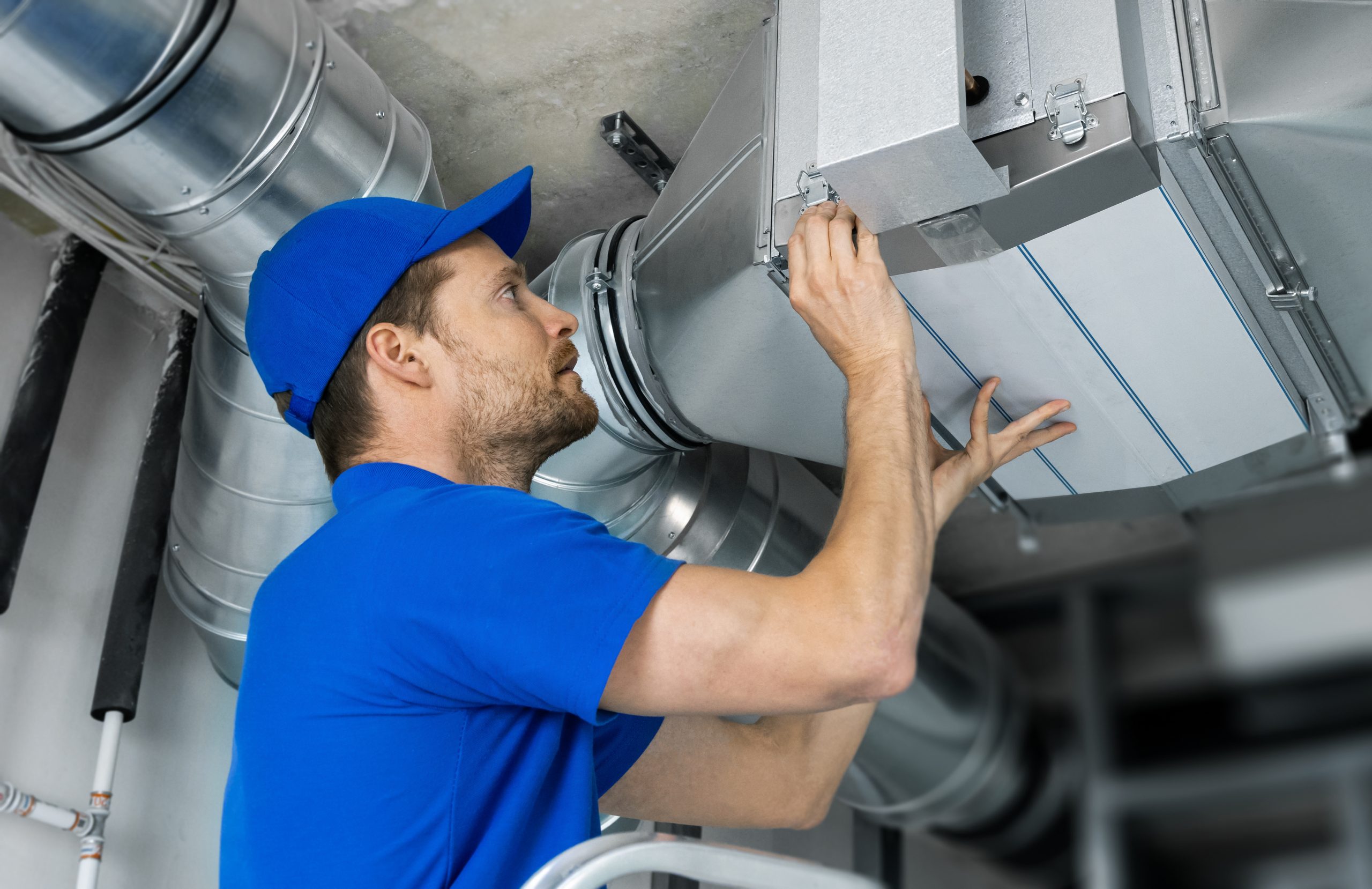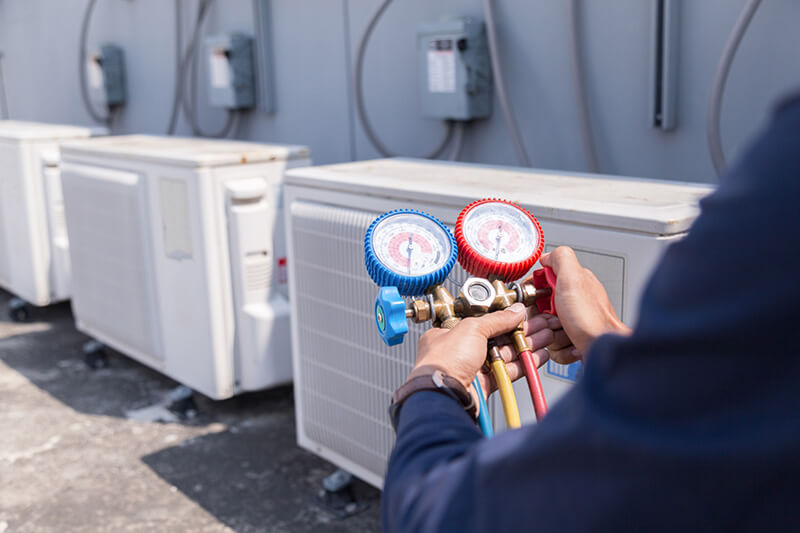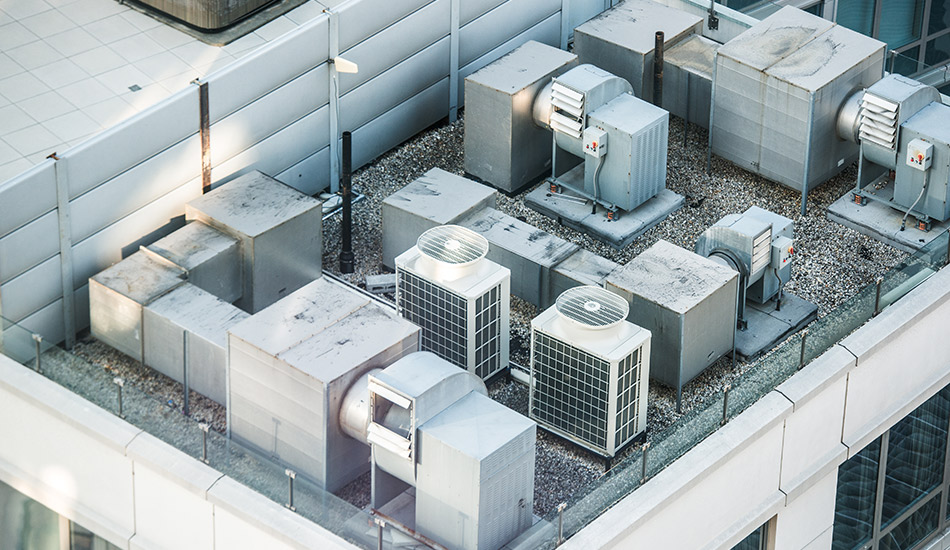How a Heatpump and Heater Work Together to Maximize Your Home's Home heating Effectiveness
Understanding just how a warm pump and furnace job with each other is vital for property owners looking for reliable heating services. Each system has its strengths, offering a balanced method to home comfort. The heat pump succeeds in moderate temperature levels, while the heating system supplies quick warmth throughout severe cold. This harmony not only lowers power costs however also boosts the life expectancy of both devices. What aspects influence this partnership, and how can home owners maximize their benefits?
Comprehending Warmth Pumps: Exactly How They Function
Although lots of people may be unknown with their internal workings, warm pumps play an important duty in modern home heating systems. These tools run by transferring warm from one area to an additional, utilizing the principles of thermodynamics. In cooler months, a warmth pump extracts warm from the outdoors air, ground, or water, and transfers it inside to warm the living area. Alternatively, throughout warmer months, it can reverse the process, functioning as an a/c unit by eliminating warmth from inside to the outside.Heat pumps include an evaporator, compressor, growth, and condenser valve. The refrigerant within the system takes in warm as it vaporizes at reduced temperature levels and stress. The compressor after that increases the pressure and temperature of the refrigerant, allowing it to release warmth as it condenses. This effective process can greatly decrease energy consumption compared to typical home heating approaches, making warmth pumps a lasting option for climate control in homes.
The Function of Furnaces in Home Heating
Heaters play an essential role in home heating by providing a dependable source of heat throughout the chillier months. They operate by creating warmth with combustion or electrical resistance, dispersing it throughout the home by means of ducts or radiant systems. The efficiency of a heater is usually gauged by its Annual Fuel Application Effectiveness (AFUE) score, which indicates just how successfully the unit transforms fuel into heat.Furnaces can make use of different power resources, including gas, electrical energy, lp, or oil, allowing house owners to choose one of the most appropriate alternative for their requirements. Unlike heatpump, which may struggle in severe cool, heating systems maintain constant efficiency, guaranteeing that interior temperatures continue to be comfortable no matter of outdoor conditions. In addition, modern heating systems frequently come outfitted with advanced modern technology, such as variable-speed blowers and wise thermostats, boosting their performance and responsiveness. This adaptability makes furnaces a critical element in all-encompassing home heating strategies.

Benefits of Making Use Of Both Equipments With Each Other
Integrating the staminas of both furnaces and heat pumps can lead to an extra reliable and efficient home heating remedy. Making use of both systems allows homeowners to take advantage of the heatpump's power effectiveness throughout milder temperatures while relying upon the furnace for even more extreme cold problems. This double method can greatly decrease power prices, as warm pumps consume less electrical energy than typical heating methods when temperature levels are moderate.Additionally, using both systems with each other can improve convenience levels in the home. Heat pumps can give constant, also heating, while heaters can rapidly elevate ambient temperatures when required. Additionally, the assimilation of both systems can prolong the life-span of devices by lowering damage on each system, as they share the work. Inevitably, house owners can appreciate a balanced, economical home heating service that changes seamlessly to varying climate problems, guaranteeing a cozy and welcoming home throughout the winter season.
Exactly How Warm Pumps and Furnaces Enhance Each Various Other
They produce a complementary heating system that makes best use of performance and convenience when homeowners integrate heat pumps and furnaces. Heat pumps run by moving heat from the outdoors air or ground, making them highly reliable in modest environments. They stand out during milder temperatures, supplying cost-effective heating. Conversely, furnaces generate warmth via burning or electrical resistance, providing strong, prompt heat during extreme chilly conditions.The combination of these 2 systems enables vibrant adjustments based on temperature level changes. During warmer months or milder winter months days, the warmth pump can take the lead, conserving energy and lowering costs. As temperature levels decline, the heater can perfectly involve, guaranteeing consistent heat throughout the home. This synergy not only optimizes energy usage yet additionally enhances the life expectancy of both systems, as each device operates within its excellent performance variety. With each other, they create a balanced setting that adjusts to varying climate demands.
Enhancing Performance: Tips for Homeowners
Homeowners can enhance their heating go effectiveness via several practical techniques. Developing a regular maintenance routine, incorporating wise thermostat technology, and carrying out reliable insulation and securing remedies are vital actions. These measures not only improve comfort however likewise minimize power prices.
Normal Upkeep Arrange
To ensure maximum heating efficiency, establishing a regular maintenance timetable is essential for any kind of home. House owners must focus on routine assessments of both heatpump and heaters to identify peak efficiency. This includes changing air filters every one to 3 months, as stopped up filters can substantially lower effectiveness. Furthermore, scheduling professional upkeep a minimum of annually allows specialists to identify and resolve possible problems before they rise. House owners must also cleanse the heatpump's outside unit to stop debris accumulation that can impede air flow. By adhering to a normal upkeep timetable, home owners not only improve their heater' effectiveness but also extend their life expectancy, resulting in greater comfort and lowered power prices throughout the cooler months.
Smart Thermostat Integration
Incorporating a clever thermostat into a home heating unit can considerably enhance power performance, particularly as it allows for specific control over temperature setups. These gadgets can discover the home owner's timetable and choices, immediately adjusting the temperature level to maximize convenience while lessening energy usage. For circumstances, they can reduce heating during times when the home is unoccupied, lowering unnecessary usage. Lots of wise thermostats also give real-time energy use data, allowing house owners to make enlightened choices about their heating habits. In addition, remote access through smart device apps enables individuals to readjust setups from anywhere, guaranteeing the home is cozy upon return. On the whole, smart thermostat combination not just improves comfort yet substantially adds to power savings and performance.
Insulation and Sealing Solutions
Smart thermostats play a crucial duty in power efficiency, but their effectiveness can be substantially enhanced by correct insulation and sealing solutions. House owners must focus on visit homepage insulating wall surfaces, floors, and attics to decrease heat loss. Top notch insulation materials, such as spray foam or fiberglass, can significantly improve thermal resistance. Furthermore, securing gaps around doors, air ducts, and home windows stops chilly air seepage and heat getaway. Weatherstripping and caulking work techniques for attending to these leakages - heat pump replacement ooltewah tn. Routine inspections for air leaks, together with using blower door tests, can aid determine issue areas. By investing in insulation and sealing, homeowners can optimize the performance of their home heating systems, inevitably bring about reduced energy intake and reduced utility bills
Usual Misconceptions Regarding Warmth Pumps and Furnaces
What misunderstandings border warmth pumps and furnaces? Many people wrongly think that heatpump are inefficient Read Full Report in colder climates. In truth, modern heatpump are made to operate effectively also in low temperature levels, providing reputable heating throughout winter season. Another usual misconception is that furnaces are constantly more reliable than heatpump. However, this relies on the details energy resources and effectiveness rankings of the devices in concern. Some might also believe that using both systems at the same time is unnecessary, yet actually, this mix can maximize heating performance, particularly during extreme climate condition. Furthermore, people commonly assume that warm pumps call for constant upkeep, when in truth, they have comparable upkeep needs to traditional heating unit. By unmasking these misconceptions, property owners can make even more enlightened decisions regarding their heating options, eventually bring about boosted convenience and power efficiency in their homes.
Maintenance Considerations for Combined Equipments

Often Asked Questions
Can Heat Pumps Job Properly in Exceptionally Cold Climates?
Heatpump can battle in very chilly climates as a result of minimized effectiveness and heat removal restrictions. However, advancements in modern technology have actually resulted in versions created for better efficiency in such problems, enhancing their stability in rough atmospheres.
How Much Time Do Heat Pumps and Furnaces Generally Last?
Heat pumps typically last 15 to two decades, while heating systems have a life-span of 15 to three decades. Normal maintenance can extend their long life, ensuring reliable operation and reducing the requirement for premature replacements.

What Is the Typical Cost of Setting Up Both Solutions?
The average price of setting up both a warm pump and a furnace usually ranges in between $5,000 to $10,000 - heat pump replacement ooltewah tn. Elements affecting this expense consist of system size, installation intricacy, and local labor rates
Exist Tax Incentives for Utilizing Energy-Efficient Heating Equipments?
Numerous homeowners ask about tax rewards for energy-efficient heating unit. Different federal and state programs usually use debts or rebates, motivating the adoption of lasting modern technologies to reduce energy usage and promote ecological duty.
How Do I Select the Right Size Heatpump and Heater?
Choosing the best size heatpump and heating system entails determining the home's square video footage, taking into consideration insulation top quality, and evaluating local climate. Consulting a professional can guarantee optimal system performance and energy efficiency based upon specific demands. ductless mini splits. Understanding how a heat pump and heater job with each other is essential for homeowners looking for reliable heating services. In colder months, a warmth pump removes warmth from the outside air, ground, or water, and transfers it indoors to warm up the living room. When house owners integrate warmth pumps and heaters, they produce a complementary home heating system that maximizes performance and comfort. Heat pumps run by transferring heat from the outdoors air or ground, making them extremely efficient in modest climates. Warmth pumps can have a hard time in extremely cool climates due to reduced performance and heat removal restrictions
Comments on “Essential Tips to Planning a furnace replacement”